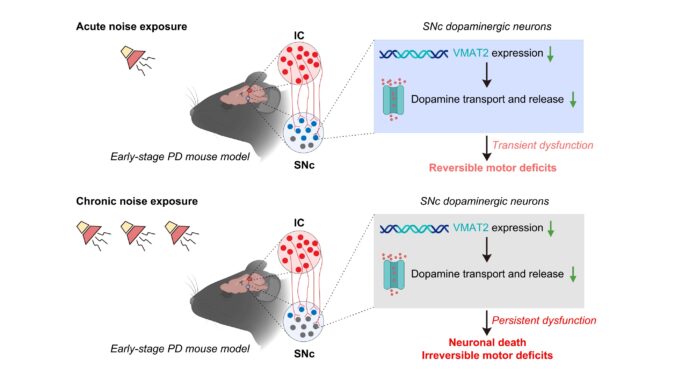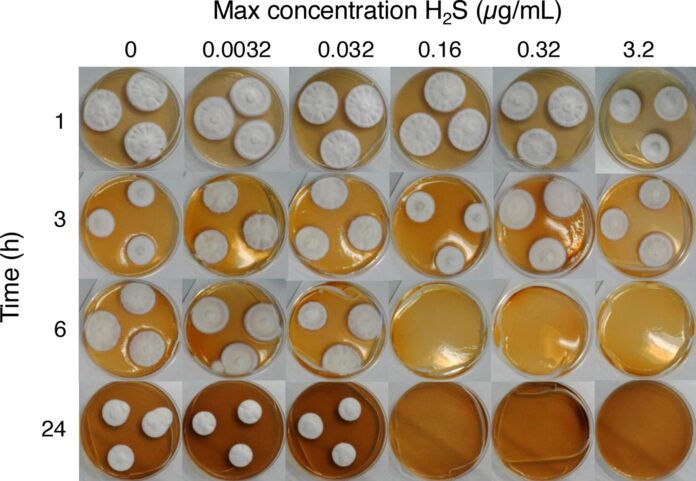A newly developed mouse model enables real-time visualization of RNA Polymerase II (RNAP2) during DNA transcription, as reported by researchers from Science Tokyo. The team engineered mice to produce a fluorescent antibody that binds specifically to RNAP2 during active transcription. Their approach enabled super-resolution imaging of transcription sites in living cells, revealing differences in gene expression dynamics across cell types and developmental states.
Transcription is the cellular process by which RNA is produced from DNA—a key step in gene expression and, ultimately, the synthesis of proteins and functional RNA molecules. An essential player in transcription is RNA Polymerase II (RNAP2), a large protein complex that unwinds DNA and coordinates the synthesis of the RNA strand.
RNAP2’s journey can be divided into two major phases: initiation and elongation. During initiation, the complex settles at the gene’s starting point and begins building the first short stretch of RNA. After a pause, RNAP2 switches to elongation, during which it travels along the gene while steadily extending the RNA strand until the full transcript is produced.
To investigate how gene expression is controlled in detail, scientists need to observe RNAP2 in action. However, currently available tools, such as fluorescently tagged RNAP2, cannot clearly distinguish between the forms that RNAP2 takes during initiation and elongation.
Against this backdrop, a research team led by Professor Hiroshi Kimura of the Cell Biology Center, Institute of Integrated Research at Institute of Science Tokyo, Japan, developed an innovative mouse model that enables in vivo visualization of RNAP2 during elongation. Published in the Journal of Molecular Biology on August 13, 2025, this study marks a critical step toward a more complete understanding of gene expression and its regulatory mechanisms in vivo.
The model focuses on detecting Ser2 phosphorylation (Ser2ph), an important molecular modification that RNAP2 undergoes and maintains during elongation. The researchers genetically engineered mice to express a modification-specific fluorescent intracellular antibody (also called “mintbody”) that specifically binds to Ser2ph-modified RNAP2. Using super-resolution fluorescence microscopy, the team was able to clearly visualize foci of transcription elongation in the nuclei of living cells from various tissues.
“Our method revealed dynamic patterns of gene transcription activity in mouse tissues that were previously only observable in fixed samples,” says Kimura.
The researchers then analyzed how transcription elongation varied depending on cell type and developmental state, observing marked differences in the number and mobility of transcription sites. For example, immune cells in the spleen exhibited unique transcription patterns, and proliferating cells generally displayed more mobile transcription foci compared to those in differentiated (mature) cells.
Overall, these experiments showcase how the proposed approach may shed light on the intricate process of transcription. “The newly developed mouse model offers a powerful tool for studying transcriptional regulation in vivo, with broad implications for understanding development, differentiation, environmental responses, aging, and disease mechanisms at the cellular level,” concludes Kimura. “It also holds promise for future applications in therapeutic development and precision medicine.”
More information:
Chihiro Matsuda et al, Organization and Dynamics of Transcription Elongation Foci in Mouse Tissues, Journal of Molecular Biology (2025). DOI: 10.1016/j.jmb.2025.169395
Institute of Science Tokyo
Citation:
Unlocking key insights into gene expression using a novel mouse model (2025, November 11)
retrieved 12 November 2025
from https://medicalxpress.com/news/2025-11-key-insights-gene-mouse.html
This document is subject to copyright. Apart from any fair dealing for the purpose of private study or research, no
part may be reproduced without the written permission. The content is provided for information purposes only.



